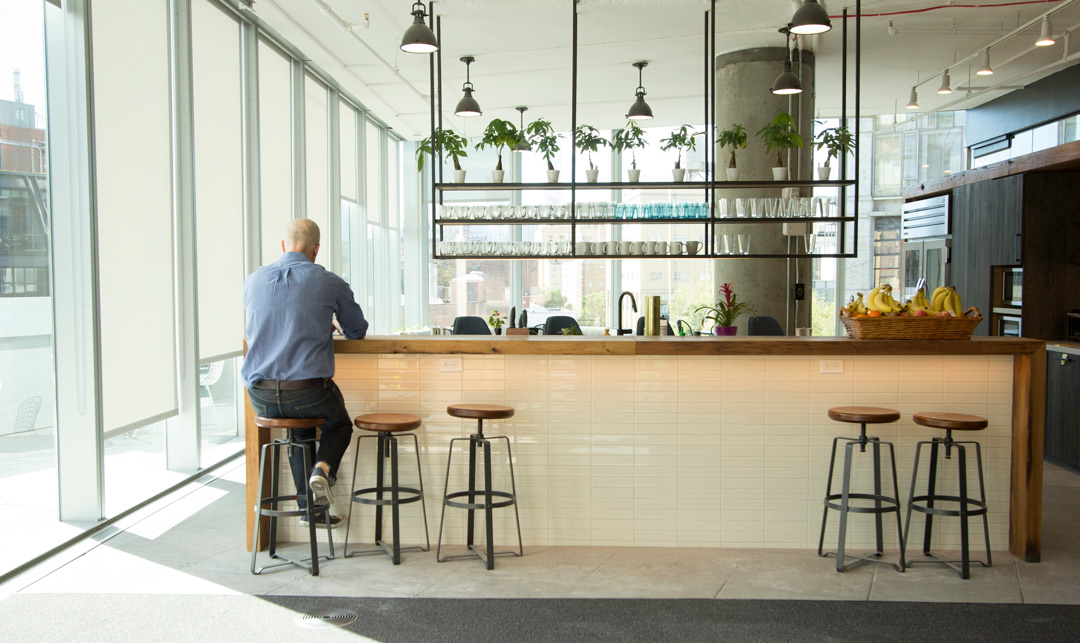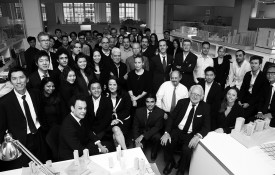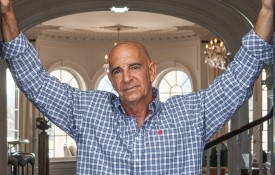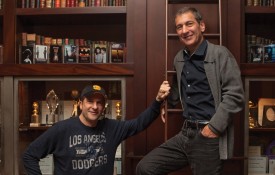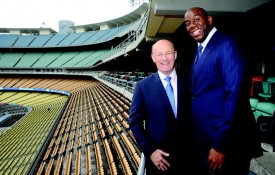Disrupting a $180-trillion asset class is no small task, but that’s exactly what Paul Scialla, founder and CEO of New York-based developer Delos, has spent the past seven years of his life working to achieve. It started when Scialla began noticing the green building trend in real estate, wondering why there wasn’t a ‘well building’ trend focused on human health.
“The whole point of buildings is to put people inside of them,” Scialla notes. “There was a lot of focus on environmental sustainability in real estate, but I didn’t see much focus on what a building does to the occupants inside it. We spend 90% of our time indoors, and yet little had been done to merge real estate and health.”
In a way, the concept seems almost too obvious: Health and wellness have been infused into many other product categories, from organic produce to ergonomic furniture, so why hasn’t the same been done for real estate?
It turns out there are several reasons, the primary one being that there simply hasn’t been an organizing body focused on setting a standard and validating it through science and research. Fifteen years ago when green building and the LEED certification process launched their ultimate success blazed the trail for a whole new vertical in real estate.

Inside the Delos Office
Further, new advances in technology over the last decade have transformed the way researchers can measure and quantify health outcomes using wearables, environmental data capture, and sensory technology.
“We’ve got eight years of research connecting everything that can be measured around you with everything that can be measured inside you,” Scialla explains. The body of research related to the spatial environment and how it impacts the human condition has been instrumental in building the library of research on which Scialla’s team has built their movement’s foundation.
Putting Health First
Putting that team together and conducting that research was the first step in making well building a reality. Scialla didn’t have training as a doctor or an architect, but he did have 18 years of experience on Wall Street and a commitment to doing things in a thorough manner. “Sometimes I think having not been in the sustainability, real estate, or medical industries gave me a perspective that allowed me to zoom out and ask questions that had not been asked before,” he observes.
Scialla started by putting doctors and architects together and asking provocative questions such as, ‘What can we introduce in our design and operation of buildings to aid in preventative medical intervention?’
Beyond stimulating conversation, he was fascinated to discover that the two professions had never really converged at an industry level. Once they did, it quickly became clear that the built environment had a profound effect on cardiovascular, respiratory, cognitive, and sleep outcomes. The opportunity to address the issue at an industry level was gigantic.
“Merging $180 trillion of asset class real estate with the fastest growing and most important industry—health and wellness, which is now up to over $4 trillion a year—is an enormous economic opportunity,” Scialla says. “And there’s the societal opportunity of delivering prevention into people’s daily lives, using real estate as that delivery vehicle.” The best part? It requires rearly zero behavioral change on the part of the occupants.
“The U.S. spends 18 percent of its GDP on healthcare. When I think of the prospect of using real estate to deliver passive prevention … we have a real shot at influencing change at a societal level,” Scialla notes, adding that, “five percent of chronic health outcomes are genetic, another 10 or 20 percent depend on a person’s lifestyle, and the rest—up to 70 percent—is influenced by your environment.”
Why Well Building?
The goal of Delos’ well building initiative is to take a holistic look at the intersection of health and real estate. For example, a building can have the best circadian lighting available, but if it doesn’t have clean air running through it, the health of the building’s occupants remains compromised. Scialla and his team set out to identify what categories needed to be created and addressed to achieve overall health.
There was a lot of focus on environmental sustainability in real estate, but I didn’t see much focus on what a building does to the occupants inside it. We spend 90% of our time indoors, and yet little had been done to merge real estate and health.
The result was the International Well Building Institute and the WELL Building Standard (WELL). Launched in 2014, the WELL is the result of seven years of work aimed at merging medical and building sciences. It consists of seven main categories: air, light, water, nourishment, fitness, comfort (thermal and acoustic), and mind. In the end, the governing body of work and resulting set of protocols has been peer reviewed and vetted by industry experts from medical, academic, political, and industry professionals.
For all of us—the “consumer”—WELL’s seven categories of external conditions have been identified as having a direct and long-term impact on biological outcomes. Occupants of both new and existing buildings (work and home) benefit from changes in these
categories.
Scialla recognized the difficulty they would have in scaling the healthy building movement and that they needed to create an ecosystem that allowed ease of entry and participation. The WELL Building Standard is governed instead by the International WELL Building Institute, a subsidiary of Delos, and registered as a public benefit corporation.
To that end, there are now more than 2,000 WELL accredited professionals at various design, architecture, construction, consultancy, and development firm. “Our mantra all along has been that health and wellness in the built environment needs to be positioned as a right, not a privilege,” Scialla emphasizes.
And the platform is spreading. WELL has been adopted in 32 countries, across nearly 800 large-scale development projects that include corporate offices, schools, retail, athletic facilities, and multi-family housing.
Since most real estate professionals are familiar with the U.S. Green Building Council’s LEED environmental standards, the WELL program was built on the same technology platform and share the same third party certifying engine. Similarly, the WELL Certification process is aligned with international green rating systems such as BREEAM in Britain and Green Star in Australia.
Implementation
What about cost? Addressing all seven points of the WELL may seem like an expensive undertaking—until you realize that the incremental cost to achieve the WELL is roughly one percent that of normal construction.

HOK’s President, CEO, & Design Principal, Bill Hellmuth alongside Scialla
This is possible in part by cost-reduction efforts of the green building movement over the last fifteen years. Scialla emphasizes that the real secret is about making intelligent and informed decisions, not necessarily more expensive ones. The payoff, he notes, of having healthier, happier occupants is exponential. Who doesn’t want to have better sleep, more energy, and reduced healthcare costs?
And as companies go, Delos is healthy indeed, employing 125 and growing rapidly. But their size is somewhat irrelevant: They’re deploying an entire industry to help them. “At the end of the day, it’s all about people. That’s critical. I also think it’s important to include as many people as possible for all their various individual expertise,” Scialla adds.
While Scialla and his team have galvanized the real estate and wellness industries around them, they have also garnered support and investment from some of the world’s brightest minds and creative thinkers.
Initially, Delos focused on new construction, but currently upwards of a third of their projects are on existing buildings. “Only two percent of all real estate in the U.S. is built new every year,” Scialla explains. “So there’s huge opportunity to renovate the remaining 98 percent. We’re making a concerted effort to make sure this program is conducive to any type of space at any type of demographic or income level.”
What Scialla hopes for is a future where wellness real estate isn’t a novel concept but a normal way of life. “I define success by how many people you can positively influence,” he tells CSQ. “Already there are upwards of a million potential occupants of WELL certified buildings who are having their health outcomes enhanced. We’ve built these programs to be conducive at any level, from affordable housing all the way up to luxury.”






































